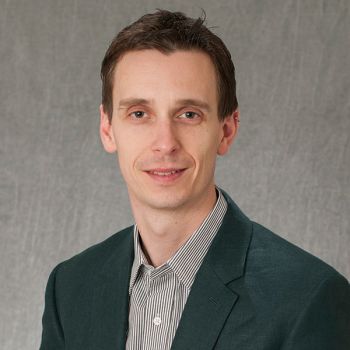
WASHINGTON (April 19, 2017) — Defective HIV proviruses, long thought to be harmless, produce viral proteins and distract the immune system from killing intact proviruses needed to reduce the HIV reservoir and cure HIV. Researchers at the George Washington University (GW) and Johns Hopkins University publish their findings in Cell Host & Microbe.
Current HIV cure research focuses on eliminating intact proviruses in infected patients. However, the ratio of intact and defective proviruses is about one to 1,000, creating a “needle in a haystack problem,” according to Brad Jones, Ph.D., co-first author of the paper and assistant professor of microbiology, immunology, and tropical medicine at the GW School of Medicine and Health Sciences.
“For a long time, most of the field has thought that we don’t have to worry about defective proviruses, because they could never restart infection,” said Jones. “Our research shows that these defective proviruses can actually produce some viral proteins. While they can’t produce an infection, they do harm by acting as decoy viruses and distracting the immune system.”
Researchers in the field have been frustrated with defective proviruses because they interfere with measurement — most assays used to measure HIV will measure both the intact and defective proviruses. However, this research details their role as much more active. By producing viral proteins, the immune system expends resources on defective proviruses, rather than intact viruses.
“It’s a much bigger issue than we expected,” said Jones. “In a way, this is a setback, but every time we learn what the obstacles are, we are moving forward. Perhaps we didn’t quite know how far we had to go at the beginning.”
Further research may lead to different courses of treatment for HIV patients. If one therapy kills defective proviruses, it may still be considered of benefit, even if it doesn’t kill all intact proviruses. Also, efforts to kill defective proviruses may lead to much stronger immune responses to clear both defective and intact proviruses.
This research was supported in part by the BELIEVE grant – a multimillion-dollar HIV/AIDS cure research grant awarded to GW as part of the second iteration of the Martin Delaney Collaboratory at the National Institutes for Health. amfAR generationCURE also had a significant role in funding this research. In addition, this research was supported by the Johns Hopkins University Center for AIDS Research and the District of Columbia Center for AIDS Research.
“Defective HIV-1 Proviruses Are Expressed and Can Be Recognized by Cytotoxic T Lymphocytes, which Shape the Proviral Landscape” is published in Cell Host & Microbe.


